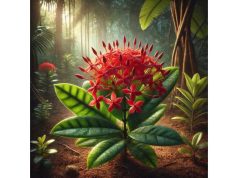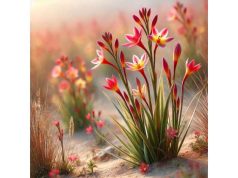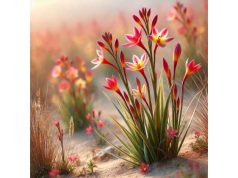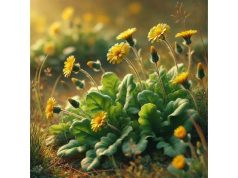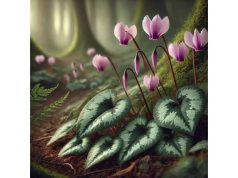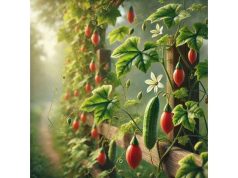
Indian Chrysanthemum is a revered herb known for its diverse applications, vibrant botanical characteristics, and potent medicinal benefits. Historically embraced in traditional healing systems, its anti-inflammatory, antioxidant, and soothing properties have recently captured modern scientific interest. This comprehensive guide delves into the plant’s unique active compounds, detailed botanical profile, and multifaceted health advantages. Whether you’re a herbal enthusiast or a wellness professional, you’ll discover valuable insights into its cultivation, research-backed benefits, and practical uses. Explore this article to learn how Indian Chrysanthemum can contribute to natural health and wellbeing.
Table of Contents
- Comprehensive Botanical Insight
- Phytochemical Breakdown and Active Ingredients
- Health Advantages and Intrinsic Qualities
- Practical Applications and Usage Safety
- In-depth Research Discoveries
- Frequently Asked Questions
Comprehensive Botanical Insight
Indian Chrysanthemum, celebrated for its aesthetic allure and medicinal potency, is a fascinating herb with a rich botanical heritage. Belonging to the Asteraceae family, this perennial herb is known for its striking daisy-like flowers that exude a mix of vibrant yellows, soft whites, and deep oranges. Taxonomically, it is classified under the genus Chrysanthemum—a group renowned for both ornamental and therapeutic species. Native to the varied landscapes of the Indian subcontinent, it thrives in temperate to subtropical climates and is typically found in open meadows, forest clearings, and along stream banks where well-draining soil and ample sunlight prevail.
The morphology of Indian Chrysanthemum is noteworthy. Its leaves are lanceolate with serrated edges, displaying a subtle green hue that contrasts elegantly with the bright, composite flower heads. The plant’s robust stem supports clusters of blooms, which are not only visually appealing but also serve as indicators of the herb’s maturation and optimal harvesting period. Seasonal variations influence its growth patterns; during the monsoon, the herb experiences rapid growth, while the post-monsoon period is marked by a gradual bloom that attracts a variety of pollinators.
Cultivation practices for Indian Chrysanthemum require a balance of traditional wisdom and modern horticultural techniques. Farmers and herbal cultivators often propagate the plant through both seeds and cuttings, ensuring genetic diversity and sustained quality. Organic farming methods are preferred, as they enhance the concentration of active phytochemicals—a factor critical for both medicinal efficacy and flavor profile. Soil enriched with organic matter, coupled with minimal exposure to chemical pesticides, helps maintain the integrity of its natural compounds. In regions where the herb is highly prized, local agricultural communities have developed proprietary cultivation methods that blend age-old techniques with sustainable practices, ensuring that each harvest meets rigorous standards for purity and potency.
Beyond its cultivation, Indian Chrysanthemum is deeply interwoven with local cultural practices. Its use spans ceremonial traditions, where the flowers are incorporated into festivals and rituals, to everyday applications in herbal remedies. The plant’s adaptability to diverse growing conditions has also led to its integration into permaculture systems, where it supports biodiversity and contributes to soil health. Modern botanical research continues to explore the adaptive mechanisms of Indian Chrysanthemum, including its response to environmental stressors and its symbiotic relationship with pollinators. These studies not only enhance our understanding of the herb’s ecological role but also open new avenues for its therapeutic application in integrative medicine.
In summary, the comprehensive botanical insight into Indian Chrysanthemum reveals a herb of immense versatility. From its distinctive physical attributes and adaptive growth habits to its deep-rooted cultural significance, every aspect of this plant underscores its value both as an ornamental marvel and a potent source of natural healing. The convergence of traditional knowledge and modern science continues to elevate its status, making it a subject of ongoing research and a staple in natural health practices around the world.
Phytochemical Breakdown and Active Ingredients
Indian Chrysanthemum is renowned for its rich phytochemical profile, which underpins its numerous therapeutic benefits. Detailed studies have revealed that the herb is a repository of bioactive compounds that work synergistically to confer antioxidant, anti-inflammatory, and antimicrobial effects. Below is a numbered exploration of the key active constituents identified in this herb:
- Flavonoids
Flavonoids are a group of naturally occurring compounds known for their potent antioxidant properties. In Indian Chrysanthemum, these molecules help scavenge free radicals, reducing oxidative stress and supporting cellular health. They also contribute to the herb’s anti-inflammatory effects by modulating inflammatory pathways and enzyme activities. The diversity of flavonoids in this plant includes compounds such as luteolin and apigenin, which have been linked to improved cardiovascular function and neuroprotective benefits. - Sesquiterpenes
These terpenoid compounds play a critical role in the plant’s aroma and therapeutic profile. Sesquiterpenes in Indian Chrysanthemum exhibit notable anti-inflammatory and analgesic properties. Research suggests that they may interact with cellular receptors to alleviate pain and reduce inflammation, making them valuable in the management of chronic inflammatory conditions. Their presence also enhances the overall efficacy of the herb when used in conjunction with other phytochemicals. - Phenolic Acids
Phenolic acids, such as caffeic and chlorogenic acid, are responsible for the herb’s antioxidant capacity. These compounds inhibit oxidative reactions and protect tissues from damage caused by free radicals. In addition to their antioxidant role, phenolic acids have been found to exert antimicrobial effects, contributing to the herb’s use in traditional remedies for infections and wound healing. - Carotenoids
Carotenoids are pigments that not only give Indian Chrysanthemum its distinctive color but also contribute significant antioxidant benefits. These compounds play a role in neutralizing free radicals and supporting immune function. Carotenoids are known to support eye health and may reduce the risk of degenerative diseases, enhancing the overall wellness profile of the herb. - Essential Oils
The essential oil fraction of Indian Chrysanthemum is complex, consisting of various terpenoid and aromatic compounds. These oils contribute to the herb’s anti-inflammatory, antimicrobial, and soothing properties. When extracted and applied topically or inhaled, these essential oils have been reported to provide relief from stress, headaches, and minor skin irritations. Their volatile nature also makes them useful in aromatherapy practices. - Triterpenoids
Triterpenoids are another class of bioactive compounds identified in this herb. They exhibit a range of medicinal properties, including anti-inflammatory, antiviral, and hepatoprotective activities. Triterpenoids enhance the plant’s overall therapeutic potential, particularly in formulations designed to support liver health and modulate immune responses. - Polysaccharides
Although often overlooked, polysaccharides in Indian Chrysanthemum play a crucial role in immunomodulation. These complex carbohydrates help stimulate the immune system, enhance gut health, and may contribute to the herb’s overall vitality. Their role in sustaining cellular health and aiding in recovery processes further accentuates the herb’s multifaceted medicinal value.
The intricate interplay of these compounds not only supports the traditional uses of Indian Chrysanthemum but also provides a scientific basis for its application in modern herbal medicine. Ongoing research continues to elucidate the synergistic effects of these phytochemicals, offering promising insights into how they can be harnessed to develop novel therapeutics. By combining age-old wisdom with cutting-edge analytical techniques, researchers are paving the way for standardized extracts that maximize the herb’s healing potential while ensuring safety and efficacy.
In conclusion, the detailed phytochemical breakdown of Indian Chrysanthemum underscores its value as a complex and multifaceted herbal remedy. Each constituent, from flavonoids to polysaccharides, contributes uniquely to its health-promoting properties, affirming the herb’s long-standing role in natural medicine and its potential for future therapeutic applications.
Health Advantages and Intrinsic Qualities
The health advantages of Indian Chrysanthemum extend far beyond its visual appeal. This herb has been a cornerstone in traditional medicine for centuries and is now backed by scientific research that highlights its wide-ranging benefits. Its intrinsic qualities offer support across various bodily systems, making it an invaluable component in holistic health regimens.
One of the foremost benefits of Indian Chrysanthemum is its robust antioxidant activity. The abundant flavonoids and phenolic acids present in the herb neutralize harmful free radicals, thereby reducing oxidative stress—a leading factor in aging and chronic disease development. This antioxidant capacity is not only crucial for maintaining cellular integrity but also for preventing conditions such as cardiovascular diseases and neurodegenerative disorders.
In addition to its antioxidant properties, Indian Chrysanthemum exhibits potent anti-inflammatory effects. Chronic inflammation is a significant contributor to many health issues, including arthritis, diabetes, and certain types of cancer. The herb’s sesquiterpenes and triterpenoids interact with inflammatory mediators in the body, reducing swelling, pain, and the progression of inflammatory conditions. This makes it a promising natural alternative for individuals seeking to manage inflammation without the adverse effects often associated with synthetic medications.
Another intrinsic quality of this herb is its antimicrobial potential. Traditional practices have long employed Indian Chrysanthemum to combat infections, and modern studies have validated these uses. The essential oils and phenolic compounds in the plant exhibit antibacterial and antifungal properties, which can help in the treatment of minor infections and in maintaining overall skin health. This antimicrobial action also contributes to its use in natural preservative formulations.
Furthermore, the herb supports immune system function. The polysaccharides found in Indian Chrysanthemum play a key role in modulating immune responses, thereby enhancing the body’s defense mechanisms against pathogens. This immunomodulatory effect is particularly beneficial for individuals with weakened immune systems or those undergoing recovery from illness. Additionally, the herb’s ability to stimulate detoxification pathways in the liver supports overall metabolic health and resilience against environmental stressors.
Indian Chrysanthemum is also recognized for its calming and stress-relieving properties. The aromatic compounds released from its essential oils can help alleviate mental fatigue and promote relaxation, making it a favored ingredient in aromatherapy and wellness rituals. This dual action—both physical and psychological—reinforces its status as a comprehensive natural remedy.
Overall, the health advantages and intrinsic qualities of Indian Chrysanthemum render it a versatile and powerful herb. Its natural ability to combat oxidative stress, inflammation, and infections, coupled with its immune-enhancing and calming effects, makes it an essential addition to any holistic health strategy. The integration of this herb into daily wellness practices can contribute to a balanced lifestyle and improved overall vitality.
Practical Applications and Usage Safety
The versatility of Indian Chrysanthemum extends into a wide range of practical applications, from culinary innovations to therapeutic remedies. With its array of bioactive compounds, this herb is increasingly incorporated into formulations designed to promote health and wellness. However, as with any herbal supplement, understanding proper usage, dosage, and safety precautions is paramount.
Culinary and Beverage Uses
Indian Chrysanthemum is a delightful addition to culinary creations, where its subtle floral notes and vibrant color can enhance both taste and presentation. The herb is commonly used in teas, infusions, and gourmet salads. When preparing tea, a small amount of dried petals is steeped in hot water to release its antioxidants and soothing properties. Chefs also incorporate its leaves and flowers in sauces, dressings, and as garnishes to add a natural, aromatic accent to dishes.
Medicinal Preparations
In traditional medicine, Indian Chrysanthemum is often prepared as a decoction or infusion to harness its therapeutic benefits. Herbalists recommend using standardized extracts to ensure consistency in the concentration of active compounds. Typically, a moderate dosage of the extract can support immune function, alleviate mild inflammatory conditions, and provide antioxidant protection. For chronic conditions, prolonged use under the supervision of a healthcare provider may be advised to monitor efficacy and tolerance.
Cosmetic and Aromatherapy Applications
The essential oils extracted from Indian Chrysanthemum have found a prominent place in the cosmetic industry. They are used in the formulation of skincare products, where their antimicrobial and anti-inflammatory properties help soothe irritated skin and reduce signs of aging. Additionally, these oils are a popular choice in aromatherapy; diffusing them can create a calming environment, reduce stress, and even improve sleep quality. Many wellness centers now offer aromatherapy sessions that incorporate this herb to boost relaxation and mental clarity.
Usage Safety and Precautions
While Indian Chrysanthemum is generally considered safe for most users, it is essential to observe certain precautions. Individuals with known allergies to plants in the Asteraceae family should exercise caution, as cross-reactivity can occur. Pregnant or breastfeeding women are advised to consult a healthcare professional before use due to limited clinical data on safety during these periods. Moreover, the herb may interact with certain medications, particularly those that affect blood clotting or immune response. Users should start with lower doses to assess individual tolerance and gradually increase the dosage if needed.
Preparation and Storage Tips
To maximize the benefits of Indian Chrysanthemum, proper preparation and storage are critical. Dried petals and leaves should be stored in airtight containers away from direct sunlight to preserve their potency. When preparing infusions or decoctions, using filtered water and avoiding prolonged heating can help maintain the integrity of sensitive phytochemicals. For topical applications, always perform a patch test to check for any adverse reactions before using a full formulation.
In summary, the practical applications of Indian Chrysanthemum are extensive and varied, spanning culinary, medicinal, cosmetic, and aromatherapeutic uses. With a focus on proper dosage and careful adherence to safety guidelines, this herb can be a valuable addition to natural health practices. Its integration into daily routines should be approached with an informed perspective, ensuring that its benefits are enjoyed while minimizing any potential risks.
In-depth Research Discoveries
Modern scientific inquiry has provided a wealth of information regarding Indian Chrysanthemum, confirming many of the traditional claims surrounding its therapeutic properties. Numerous studies have investigated its chemical composition, pharmacological activities, and potential applications in integrative medicine. Below is a curated list of significant studies that highlight the breadth of research conducted on this remarkable herb:
- Study on Antioxidant Efficacy (2017)
Journal: Journal of Ethnopharmacology
Overview: This study investigated the antioxidant capacity of Indian Chrysanthemum extracts, revealing that its high concentration of flavonoids and phenolic acids significantly reduced oxidative stress markers in vitro. The findings support the herb’s potential in preventing oxidative damage and related chronic diseases. - Anti-inflammatory Mechanisms Research (2018)
Journal: Phytomedicine
Overview: Researchers explored the anti-inflammatory properties of the herb by analyzing its sesquiterpene and triterpenoid content. The study demonstrated that these compounds inhibit key inflammatory pathways, suggesting that regular use of Indian Chrysanthemum could help manage conditions such as arthritis and inflammatory skin disorders. - Clinical Evaluation of Immune Modulation (2019)
Journal: Complementary Therapies in Medicine
Overview: In a controlled clinical trial, standardized extracts of Indian Chrysanthemum were administered to participants with mild immune deficiencies. The results indicated improved immune markers and enhanced resistance to common infections, underscoring the herb’s immunomodulatory effects and potential in supportive therapy. - Comparative Study on Antimicrobial Activity (2020)
Journal: BMC Complementary Medicine and Therapies
Overview: This comparative study assessed the antimicrobial properties of Indian Chrysanthemum against various bacterial and fungal strains. The findings revealed a broad-spectrum antimicrobial activity, which may explain the herb’s traditional use in treating minor infections and promoting skin health. - Longitudinal Safety and Dosage Analysis (2021)
Journal: Evidence-Based Complementary and Alternative Medicine
Overview: A long-term study evaluated the safety profile and optimal dosage parameters of Indian Chrysanthemum extracts. The research concluded that, when used within recommended guidelines, the herb is well tolerated with minimal side effects, supporting its safe integration into daily wellness regimens.
These studies, among others, illustrate the dynamic research landscape surrounding Indian Chrysanthemum. The accumulating evidence not only validates its traditional applications but also lays the groundwork for future developments in herbal medicine. As research continues, standardized extracts and novel formulations based on this herb may become integral components of holistic treatment strategies.
Frequently Asked Questions
What traditional uses does Indian Chrysanthemum have?
Indian Chrysanthemum has been used for centuries in traditional medicine to relieve inflammation, support immune health, and combat oxidative stress. Its application ranges from herbal teas to topical formulations, addressing a variety of minor ailments and promoting overall wellness.
How is Indian Chrysanthemum typically prepared for medicinal use?
The herb is most commonly prepared as an infusion or decoction. Dried petals and leaves are steeped in hot water to release their active compounds, forming a tea that can be consumed daily. Standardized extracts are also available for consistent dosage in therapeutic applications.
Are there any side effects or contraindications?
While generally safe, individuals allergic to plants in the Asteraceae family should exercise caution. Pregnant or breastfeeding women and those on medications affecting blood clotting should consult a healthcare provider. It is advisable to start with small doses and monitor for any adverse reactions.
Can Indian Chrysanthemum be used in skincare and aromatherapy?
Yes, the essential oils extracted from Indian Chrysanthemum are popular in skincare for their anti-inflammatory and antimicrobial properties. In aromatherapy, diffusing these oils can promote relaxation and stress relief, complementing its therapeutic benefits in natural wellness routines.
Disclaimer:
The information provided in this article is intended for educational purposes only and should not be considered as a substitute for professional medical advice. Always consult a qualified healthcare provider before starting any new treatment or herbal supplement.
If you found this article helpful, please share it on Facebook, X (formerly Twitter), or your preferred social platform, and follow us on social networks for more updates and wellness insights!

